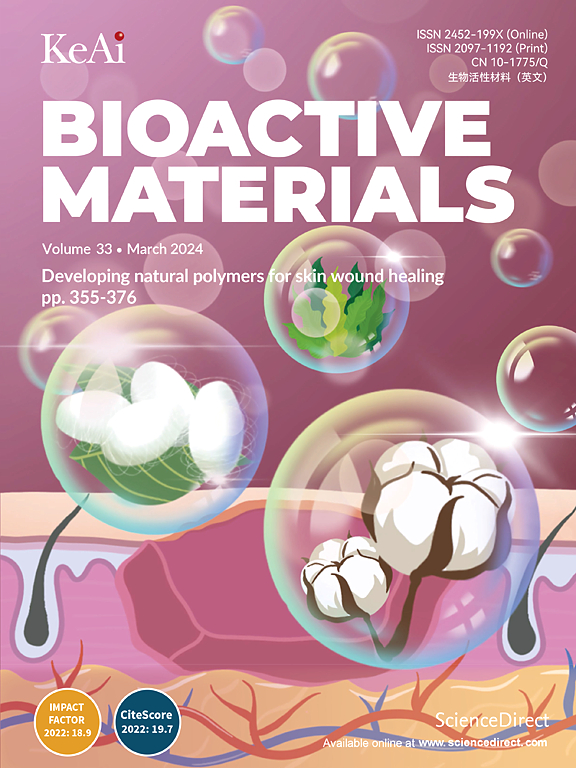Evaluation of FeMnN alloy bioresorbable flow diverting stents in the rabbit abdominal aorta
IF 18
1区 医学
Q1 ENGINEERING, BIOMEDICAL
引用次数: 0
Abstract
Flow diverting stents are braided, metallic endoluminal devices widely used to treat intracranial aneurysms. Bioresorbable flow diverters (BRFDs) are gaining traction as the next generation of flow diverter technology. BRFDs aim to occlude and heal the aneurysm before safely dissolving into the body, mitigating or eliminating complications associated with the permanent presence of conventional flow diverters such as thromboembolism and stenosis. Additional putative advantages of a BRFD include a reduction in metal induced medical imaging artifacts, a restoration of physiological vasoreactivity, and allowing physicians to re-access the aneurysm if an additional procedure is required. In this current study, iron-manganese-nitrogen (FeMnN) alloy BRFDs and permanent control FDs composed of an industry standard Cobalt-Nickel-Chromium alloy were deployed in the rabbit aorta. MicroCT and SEM corrosion analysis determined the FeMnN wire volumes and cross-sectional areas had reduced approximately 85 % and 95 % after 3- and 6-months implantation duration, respectively. Histological analysis demonstrated the BRFDs exhibited suitable biocompatibility, with no cases of in-stent thrombosis, clinically significant stenosis, or adverse tissue responses observed. Immunohistochemistry revealed the neointimas surrounding the BRFDs featured a confluent endothelium covering several layers of smooth muscle cells, with macrophages adjacent to the device wires. The macrophages were able to penetrate the corrosion product and were observed transporting corrosion products away from the implant site. This current work provides primary in vivo corrosion and biocompatibility data to the field for FeMn alloys, which we feel will stimulate and inform the design of next-generation bioresorbable endovascular devices.

求助全文
约1分钟内获得全文
求助全文
来源期刊

Bioactive Materials
Biochemistry, Genetics and Molecular Biology-Biotechnology
CiteScore
28.00
自引率
6.30%
发文量
436
审稿时长
20 days
期刊介绍:
Bioactive Materials is a peer-reviewed research publication that focuses on advancements in bioactive materials. The journal accepts research papers, reviews, and rapid communications in the field of next-generation biomaterials that interact with cells, tissues, and organs in various living organisms.
The primary goal of Bioactive Materials is to promote the science and engineering of biomaterials that exhibit adaptiveness to the biological environment. These materials are specifically designed to stimulate or direct appropriate cell and tissue responses or regulate interactions with microorganisms.
The journal covers a wide range of bioactive materials, including those that are engineered or designed in terms of their physical form (e.g. particulate, fiber), topology (e.g. porosity, surface roughness), or dimensions (ranging from macro to nano-scales). Contributions are sought from the following categories of bioactive materials:
Bioactive metals and alloys
Bioactive inorganics: ceramics, glasses, and carbon-based materials
Bioactive polymers and gels
Bioactive materials derived from natural sources
Bioactive composites
These materials find applications in human and veterinary medicine, such as implants, tissue engineering scaffolds, cell/drug/gene carriers, as well as imaging and sensing devices.
 求助内容:
求助内容: 应助结果提醒方式:
应助结果提醒方式:


